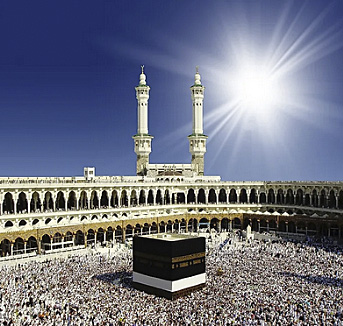
- Religion and History
A Relevant and Brief History of Islam
Introduction
Recently, Tom Scholl, who identified himself as a pastor of churches in Ohio and New York, as well as holding positions in several ecumenical organizations, wrote a 3-part article for my local newspaper, The Macon Telegraph, titled “What the Koran says about Christianity.” I thought it would be an interesting series to read, but I was greatly disappointed and not a little irked.
It could have been an apologia about the goodness of Islam, using selective passages from the Koran, and being charitable to some elements of Christianity. But his apologia went further than the usual arguments and Koranic exhortations attempting to show that Jihad and terrorism were not promoted by the teachings of the Koran and Islam. The pastor, in fact, went on to truncate and condemn the history of the Christian Crusades — the Crusades of the Middle Ages being recently targeted by liberal secularists as the real boogie man of religious history — defending Islam as a peaceful religion. Mr Scholl thus wrote:
“Christians should be very familiar with misguided and/or violent followers of the faith. For hundreds of years, the Christian Crusades sent many thousands of warriors to kill huge numbers of Muslims and Jews.”
And that was not all. Scholl went on to mention the internecine Christian and political conflict in Northern Ireland; racial hatred and black lynchings that reopen wounds that have nothing to do with Islam or the Crusades; and to add even more flavor into the brewing mix of hatred toward his own religion and culture, he continued:
“Catholics and Protestants in Northern Ireland planted bombs killing each other’s children. Not too many decades ago, church-going white men lynched blacks — grandsons and great grandsons of the slaves of Christian owners. Some Christian clergy fall prey to lust and greed.”
And not even the witch hunters of Salem, Massachusetts are spared in his condemnation of Western history and his defense of the benignity of Islam. For good measure, they are thrown into the mix along with the old Jim Crow laws:
“From witch burnings in Plymouth [sic; I suppose he meant Salem], Mass., to Jim Crow, to corrupt but ‘religious’ politicians today, the list seems endless. People claiming Christianity, without any sign of God in their lives, are found all over the world. When Jesus saw such hypocrisy in the Pharisees he condemned them. Mohammed did, too, when he faced it.”(1)
It was then I responded and further elaborated about this piece to answer the misguided pastor for I felt he might be misleading his flock if he was still preaching. Mr. Scholl had picked and chosen what he wanted to believe about what the Koran ostensibly says about Jesus and Christianity. His intentions, I posit, were derived in part from good intentions, originating in fantasy, Freudian dreams, desiring wish-fulfillment. But I also detected a convoluted hatred of unresolved conflicts with his own religion, history and culture, as evinced in the above quotations.
Unfortunately fantasy and make-believe, even if pronounced with good motives and intentions, can still be conducive to a dangerous soporific to lower our guard and lead us to error and destruction. The truth is that we are dealing with a very militant, resurgent religion that has not been tempered by its own Renaissance, Reformation, or the Ages of Enlightenment and Reason — not since the golden age of Harun al-Rashid (AD 763-809) and the book of One Thousand and One Arabian Nights.
It only takes but a relatively small number of zealot terrorists to disrupt a country. The “Arab Spring” is becoming a fundamentalist “Islamic Winter” of the world’s discontent and a nightmare for the vast majority of peaceful Muslim denizens under which it is proclaimed.
We must remain informed and vigilant for the fate of Western civilization — which admittedly uses Judeo-Christian principles sometimes only as an adornment and not as a guiding light — is still the best hope for the world and yet its survival remains on the line. Allow me now to briefly recount the History of Islam, based on facts and not fantastic tales of beneficence and kindness.
A Brief History of Islam
Mohammed (AD 570-632) was brought up by his famed uncle, his guardian, Abu Taleb. His grandfather was the Prince of Mecca, hereditary guardian of the Kaaba, who expelled the Christian Abyssinians from the port of Aden and the kingdom of Yemen and sent them back to Ethiopia.
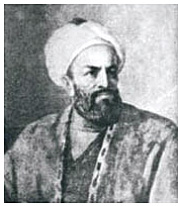
Mohammed married a rich widow from Mecca, Khadijah (Cadijah). She was the first to believe the message of the Prophet. After her death, Mohammed married his most beloved wife, Ayesha (Aisha), daughter of his successor Abu Bakr. It is stated that she was nine years old when the marriage was consummated. Her father, Abu Bakr, a close friend and companion of the Prophet was assigned by Mohammed to lead the prayer at the Mosque of Mohammed (at Medina) and became the First Caliph (AD 632-634) after the death of the Prophet. Like Mohammed, he died a natural death (“caught a chill and died in his old age”).
But the successors, following the acts of Mohammed, lived by the sword and died by the sword in the name of Islam.
By the time of Mohammed and Abu Bakr, the Arabian peninsula had been conquered by the sword. Infidels must submit by the sword, convert to Islam, or pay tribute, or die by the sword. Khalid (AD 592-642) the companion of Mohammed, the great Arab warrior and conqueror of Arabia, Persia, and the Holy Land was called “the Sword of Allah” and the “Scourge of the Infidel.” As a conqueror, he was unmatched until the advent of the Mongols in the 13th century.
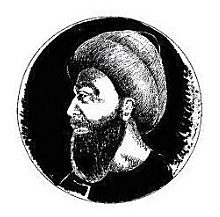
The Second Caliph, Umar al-Khattab (AD 586-644), conqueror of the Persian Sassanid Empire, Jerusalem and the Holy Land, and two-thirds of the Christian Byzantine Empire, died by the sword, stabbed to death by a captive Persian.
The Third Caliph was Uthman (AD 579-656; photo, right). Under his watch, parts of North Africa including Morocco as well as Armenia, Azerbaijan, Afghanistan, etc. were conquered. He was assassinated, beaten to death, in the Islamic struggle for power. Although the Umayyads had fought against Uthman, after the latter’s death, they rallied to avenge him as an expediency to gain power. Attaining the Caliphate, the Umayyads, under the prudent Caliph Muawiyah, moved the throne first to Damascus and latter Baghdad. His successors in Damascus and Baghdad were neither statesmen nor holy saints, but they were the temporal as well as the spiritual heads of the Faith.
We next come to Ali (AD 624-680), son of Abu Taleb. Ali, Mohammed’s young cousin, was the first male figure to believe the Prophet, and he married Mohammed’s surviving and most beloved daughter, Fatima (AD 605-633). Fatima became the “leader of all women in this world and Paradise.” Ali became the Fourth Caliph, but in the relentless and bloody power struggle that later became Shia (Shiite) vs. Sunni, he was assassinated in the Great Mosque of Kufa, Iraq, becoming the First of the Twelve Imams, the Infallible, of the Shia religion as well as the Fourth Caliph of the Sunni sect.
Ali’s sons were Hasan (AD 624-680) and Hussein (Husayn; AD 626-680). They were the Second and Third Imams of the Shia sect. Hasan was poisoned by his wife on orders of the Sunni Caliph Muawiyah. Hussein was killed in the internecine religious feuds and beheaded at the Battle of Karbala (Iraq). Iran and Iraq, where much of this bloodshed took place, became sanctuaries of the Shia religious sect of Islam.
Ayesha was to ally herself with the Umayyads, led by Muawiyah, a son of Abu Sophian, former and bitter enemy of Mohammed at Mecca, who after his defeat by the Prophet had reluctantly embraced Islam. Ayesha was an implacable enemy of Ali and his descendants with Fatima. Ayesha died at the famous Battle of the Camels with the Arabian chieftains who had rebelled against Uthman, who had then supported Ali and Hasan.(2)
The 4th through 11th Imams venerated by the Shia sect were all poisoned in the interminable political struggles and religious feuds that followed in the next two centuries. So all of the Shia Imams were assassinated except for the 12th and Last Imam, who is considered the Mahdi.
In the 19th century, a Mahdi, Mohammed Ahmad, rose against the British, seizing Khartoum and causing great bloodshed in the Sudan. General George Gordon Pasha died in Khartoum trying to lead an evacuation of the city (1885). The British waited for the right time and at the Battle of Omdurman (1898), under General (later Field Marshall) “Lord Kitchener of Khartoum” exacted their revenge, but I am digressing…
The last Imam lives in “occultation” until his return is willed by Allah. His return is still awaited by the Shia faithful.
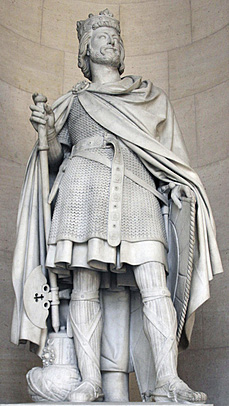
Incidentally, the Crusades were a picnic compared to the Islamic conquests of the 7th through the 17th centuries, until the Islamic momentum was stopped in the West at the Battle of Tours (AD 732) by Charles Martel (“The Hammer”), when the Moorish onslaught was finally stopped in France. It took Spain until 1492, another seven centuries, to expel the Moors from the Iberian peninsula, “La Reconquista.” By the time that the Christians had been rallied by Pope Urban II for the First Crusade (1095), the sword of Islam had conquered nearly two-thirds of the Christian world, and under the Ottoman Turks in the 15th and 16th centuries, they would conquer, by blood and scimitar, more Christian lands, including Asia Minor and Constantinople (the second Rome; 1453) — i.e., Turkey and Istanbul today! The Conquest of India was particularly brutal.(3)
Incidentally, the First Crusade was convened by the pope so that Christians would be allowed to enter and worship at Jerusalem again, not to conquer territories for loot or for European culture aggrandizement. Christians had been allowed to worship in Jerusalem for centuries, but I have written about this elsewhere.(4)
The Three Jihads — In Summation
But to recapitulate let’s say that much has been said and extrapolated into contemporary politics about the evils of the Christian Crusades by “popular culture” historians as well as sundry left-wing liberals, veritable wolves in sheep clothing, bent on deriding Western civilization and tearing apart the great fabric of America, whether it was capitulating to communism during the cold war or to Islamic terrorism in the post-Soviet era. In fact, there has been at least three of these defeatist liberals writing in my local newspaper, The Macon Telegraph: One being Mr. Scholl himself, the inspiration for this “Islam 101” article, who now serves in the Editorial Board of the paper.
At the risk of historiographical repetition, let’s then point out there have been three major Jihads, which I now summarize as follow:
The First Jihad, much of which I have already related, commenced in A.D. 622 in Arabia headed by Mohammed himself and ended at about A.D. 750. In the mid-8th century A.D., the victors thus satiated after such an incredible feat and magnificent triumph rested, an unparalleled triumph of religious zealotry. They were only stopped by the triumph of Charles Martel at the Battle of Tours in France in A.D. 732.(5) Much of the occurrences of this First Jihad was related in aformentioned paragraphs.
The Second Jihad (1071-1683) resumed the wars of Islamic conquest over Christendom as well as India. This time it was the Seljuk Turks who invaded Europe, defeated the Byzantine army at the Battle of Manzikert in Armenia in 1071, and shamefully captured the Byzantine Emperor Romanus IV Diogenes (1068-1071), who was later executed in Constantinople for his heinous defeat and surrender. The Turkish army resumed its advance in the Balkans, and at the Battle of Kosovo inflicted another defeat on the allied Christian armies. Much of the Balkans were conquered. In India, Persians, Afghans, Turks, and Mongol descendants ravaged the land, destroyed Hindu temples, and conquered much of the Northern Indian subcontinent. But on the Iberian peninsula, the Spanish armies of the Christian kingdoms began their slow Reconquista as noted. In Asia Minor, Constantinople finally fell to the Ottomans led by Sultan Mohammed II (or Mahomet II, “The Conqueror”) in 1453.
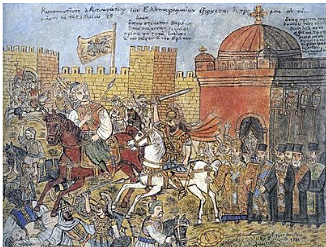
In his book Jihad in the West: The Moslim Conquests from the 7th to the 21st Centuries, author Paul Fregosi graphically describes what happened after the savage capture of Constantinople (photo, left) by Mahomet II in 1453 and his Ottoman Turks:
“Several thousand of the survivors had taken refuge in the cathedral: nobles, servants, ordinary citizens, their wives and children, priests and nuns. They locked the huge doors, prayed, and waited. Mahomet had given the troops free quarter. They raped, of course, the nuns being the first victims, and slaughtered.
“At least four thousand were killed before Mahomet stopped the massacre at noon. He ordered a muezzin [the Muslim leader who issues the call to prayer] to climb into the pulpit of St. Sophia and dedicate the building to Allah. It has remained a mosque ever since.
“Fifty thousand of the inhabitants, more than half the population, were rounded up and taken away as slaves. For months afterward, slaves were the cheapest commodity in the markets of Turkey. Mahomet asked that the body of the dead emperor be brought to him. Some Turkish soldiers found it in a pile of corpses and recognized Constantine XI by the golden eagles embroidered on his boots. The sultan ordered his head to be cut off and placed between the horse’s legs under the equestrian bronze statue of the emperor Justinian. The head was later embalmed and sent around the chief cities of the Ottoman empire for the delectation of the citizens.
“Next, Mahomet ordered the Grand Duke Notaras, who had survived, to be brought before him, and asked him for the names and addresses of all the leading nobles, officials, and citizens, which Notaras gave him. He had them all arrested and decapitated. He sadistically bought from their owners [Muslim commanders] high-ranking prisoners who had been enslaved, for the pleasure of having them beheaded in front of him.”(6)
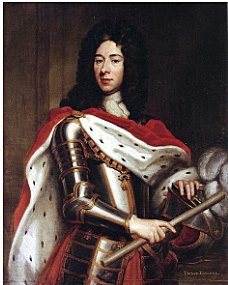
In the West, the Reconquista was completely accomplished with the fall of Granada in 1492 to the Most Catholic Monarchs, Isabella of Castille and Ferdinand II of Aragon. In the East, on the other side of the geographical crescent, the Ottoman Turks were finally defeated and the Islamic wave began to recede almost a millennium after the First Jihad. The blow to the Turks took place at the Battle of Vienna in 1683, fought on the Christian side by the alliance of the Holy Roman Emperor Leopold, Pope Innocent IX, young Eugene of Savoy, and the great King of Poland, Jan Sobieski III. The re-conquest of the Balkans that followed was led by the indomitable and ever present Prince Eugene of Savoy, who inflicted the final defeat upon the Ottomans* at the Battle of Belgrade in 1717.
Conclusion
Christianity is the most populous religion in the world with 2 billion faithful. But despite the military setbacks of years past, Islam is growing very rapidly. It is the second largest religion with 1.1 billion Muslims worldwide, and it is set to double its number in the next 20 years. I am told though that in Africa where Islam has taken a heavy toll on the recalcitrant Christian and Animist populations, Islam is on the decline and cannot sustain itself. That is to be seen.
The Third Jihad began, as you might have guested, with 9-11 and remains in progress.
Thus in concluding this essay, attentive reader, please forgive my frequent but necessary digressions and repetitions. it is the end of my brief but factual rather than wishful-thinking history of Islam. The reader can now draw his/her own conclusions about whether Western civilization should be defended (7), and to the relative benignity or militancy of Islam. This “Brief History” should give us an inkling of what we can expect and to what the future might hold, if we continue to swallow the liberal media-administered soporifics of political correctness and acquiescence that have been inducing us to apathy and deadly slumber.
And I do thank Mr. Scholl for writing his intended journalistic soporific that unwittingly aroused me from my own slumber, prompting me to sound the bugle and write this unassuming piece on a beautiful winter, Sunday afternoon.
* During the 19th century, the empire of the Ottoman Turks became known as the “Sick man of Europe,” and the territories of the Sublime Porte would have been easy pickings for the expansionism of the Russian empire of the Czars had it not been for France and England, which supported Turkey as the key to the access to the Black Sea and the maintenance of the balance of power in Europe.
References
1. Scholl, Tom, What the Koran says about Christianity: Part 2. The Macon Telegraph, February 12, 2012.
2. The Islamic invasions from the 7th Century AD, through the Medieval period, up to the 15th Century AD is discussed in Will Durant’s The History of Civilization (Volume 4) — The Age of Faith, in the subchapters “The Arab Conquest” and “The Sword of Islam,” p. 151-205.
3. The conquest of India was protracted and brutal, and it is discussed graphically by Will Durant in his masterpiece, The History of Civilization (Volume 1; 1935) — Our Oriental Heritage in the subchapter “The Moslem Conquest,” p. 459-476.
4. Faria, Miguel A. On the Spanish Inquisition and the Crusades. HaciendaPublishing.com, September 12, 2011. Available from: https://haciendapublishing.com/on-the-spanish-inquisition-and-the-crusades/.
5. Stolinsky, David C. Charles Martel, where are you? HaciendaPublishing.com, October 30, 2014. Available from: https://haciendapublishing.com/charles-martel-where-are-you-by-david-c-stolinsky-md/.
6. Fregosi, Paul. Jihad in the West: the Muslim Conquests from the 7th to the 21st Centuries. p. 256-257.
7. Faria, Miguel A. A defense of Western culture and civilization without apologies. HaciendaPublishing.com, November 16, 2014. Available from: https://haciendapublishing.com/a-defense-of-western-culture-and-civilization-without-apologies-by-miguel-a-faria-md/.
Written by Dr. Miguel Faria
Miguel A. Faria Jr., M.D. is Associate Editor in Chief and World Affairs Editor of Surgical Neurology International. He is a former Clinical Professor of Neurosurgery and Adjunct Professor of Medical History. Dr. Faria is the author of Cuba in Revolution — Escape From a Lost Paradise (2002). He has written numerous articles on the blessings of liberty and the venalities of totalitarianism, collectivism, and communism — all posted at his website: HaciendaPublishing.com.
This article was published exclusively for HaciendaPublishing.com on February 18, 2012, and it was last and significantly updated on January 19, 2015.
The article can be cited as: Faria MA. A relevant and brief history of Islam. HaciendaPublishing.com, February 18, 2012. Available from: https://haciendapublishing.com/a-relevant-and-brief-history-of-islam/
Copyright ©2012 Miguel A. Faria, Jr., MD
1 thought on “A Relevant and Brief History of Islam”
By the middle of the fourth century AD “the church” had been so firmly corrupted by the merger with paganism that it became almost antithetical to the gospels as produced by the prophets prior to Jesus’ and the direct disciples of Jesus.—JAM (FB)
—–
if that was so, it took the reformers until 1517, over ten centuries to begin the reformation of the Church. Today the reformed churches are water-down Kool aid theology and scholarship, compared to the Catholic Church (I was brought up Presbyterians and attended Presbyterian churches until they were stopped by Fidel Castro in the late 1960s). It tells millions that out of a population in the US that is only 20% Catholic, ALL of the conservative Supreme Court Justices — Alito, Thomas, Roberts, Gorsuch, Kavanaugh and Amy Coney Barret, who provide the valid and sometime brilliant arguments against the unconstitutional mandates of the government— are All Catholic!—Dr. Miguel Faria